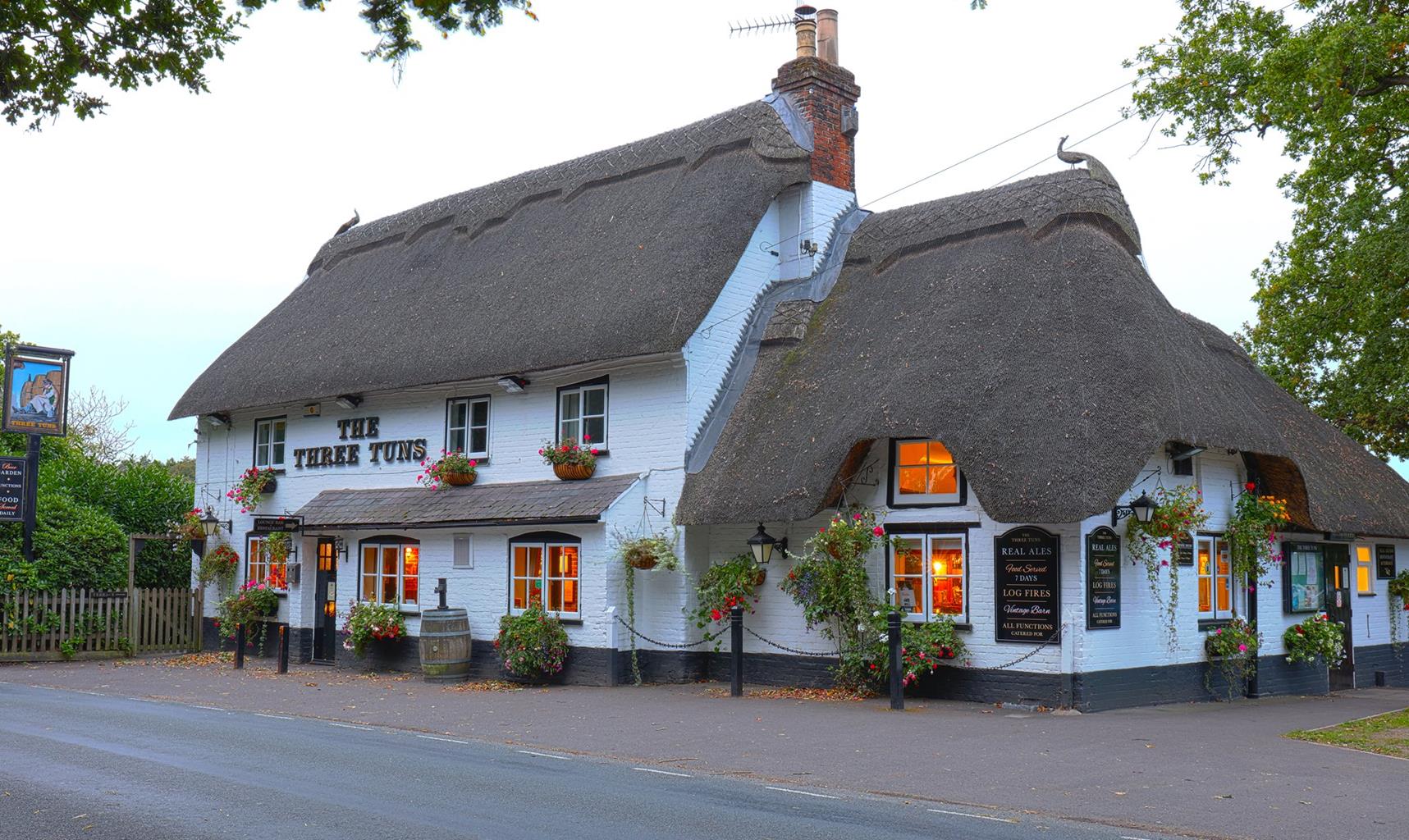A spacious park located within the Cranborne Chase Area of Outstanding Natural Beauty and has…
The royal forest of Cranborne Chase

4 miles (6.4kms)
About the walk
Cranborne Chase covers around 100sq miles (260sq km) of the long chalk massif that straddles the Dorset/Wiltshire border east of Shaftesbury. Once a royal hunting preserve, it is now rolling grassland with pockets of mixed woodland. Compared with other parts of Dorset, there are few settlements here, a sign of the feudal state in which the land was held until 1830. Like most of southern England after the last ice age, Dorset became smothered in a natural growth of native, broadleaved woodland, such as oak, ash and elm. As the human population spread, this woodland was gradually cleared, firstly for its valuable timber and secondly to make way for agricultural land. The hunting ‘forest’ of Cranborne Chase claimed by William the Conqueror included open sections of heath, downland, scrub and rough pasture, as well as patches of remaining woodland. Little original forest remains on the Chase – most woods show signs of mixed planting and many generations of coppicing.
The effects of planting for timber in the late 18th century can be seen in the widespread stands of non-native beech across the Chase. Trees for timber were planted compactly to encourage tall, straight growth. Coppicing, the chief form of woodland management, was designed to produce a continuous supply of timber for everyday use. Hazel that was cut back or coppiced when young would grow long, straight poles. Repeating the exercise produced a steady supply of timber for thatching spars, hurdles and other uses. The resulting multi-stemmed growths, or stools, can be seen today all over Dorset’s woods and include oak, ash, alder, sweet chestnut and even sycamore. In Garston Wood you can see the effects of modern coppicing in action on hazel and field maple. The seven- to eight-year cycle of cutting means that there are different stages of tree development within the one wood, creating more light and space than if it were left unmanaged. This produces an optimum habitat for wildlife, including sunlight-loving butterflies such as the silver-washed fritillary and purple hairstreak.
The pursuit of fallow deer on the Chase provided the mainstay of royal sport. The deer can still be seen here. Cranborne Chase changed hands many times, and the hunting rights were acquired by King John and retained by most succeeding monarchs until the 17th century. In 1714 they passed to the Pitt-Rivers family, who ruled the area like feudal overlords. Operating under so-called Chase Law and free from normal policing, Cranborne became a byway for smugglers and a refuge for criminals, often with bloody results – especially when conflicts arose over poaching. In 1830, after considerable local pressure, Chase Law was abandoned and life became a little more settled.
Walk directions
Go through the gate in the corner of the car park and take the broad track that leads up through the woods. Go straight ahead through a kissing gate and emerge at the corner of a field. Keep right for a few paces up the edge of this field to the first corner, then head straight across the field.
At the hedge corner, turn left following the waymark sign and walk along the bridleway with the hedge to your left, through rolling farmland dotted with trees. The muddy farm track leads gently downhill. Where it sweeps left into the farm, go straight ahead on a grassy track. Pass some cow byres on the left, times, and the hunting rights were acquired by King John and retained by most succeeding monarchs until the 17th century. In 1714 they passed to the Pitt-Rivers family, who ruled the area like feudal overlords. Operating under so-called Chase Law and free from normal policing, Cranborne became a byway for smugglers and a refuge for criminals, often with bloody results – especially when conflicts arose over poaching. In 1830, after considerable local pressure, Chase Law was abandoned and life became a little more settled. with Upwood farmhouse largely hidden in some trees ahead, and turn right along the lane. Continue through a gate, along an old avenue of sycamores between high banks and hedges.
Pass a house hedge on the right and, where the track sweeps right to a lane, bear left on a steep, narrow path straight down the hill to emerge on a road, in the hamlet of Deanland. Turn right, pass a phone box that now serves as a local information booth and reach a footpath on the left with a yellow marker. Bear diagonally right through a copse to go through a gap with the remains of a stile, then bear left up the edge of the field, with woods to your left.
Don’t miss a stile on your left, and turn right by it, to walk across the field, parallel with the road. Over the brow of the hill ahead, the pleasing higgledypiggledy settlement of New Town can be seen. Head for the gap in the bottom corner of the field. Turn left up the lane, which becomes a broad, woodland track. Follow this for 0.5 miles (800m). By the entrance to a conifer wood, named the Great Forlorn, look for the ‘Sixpenny Handley Roundwalk’ waymarker and turn right up the hill. After a short sharp climb it levels out, with fields on your left. Keep straight on, with good views across to West Chase House, at the head of its own valley. Descend steadily, then cross a stile to emerge at a road by a lodge house.
Cross straight over onto a broad track and immediately turn up to the right on a narrow path by an electricity pole and waymarker. Follow this straight up the hill through the woods – it levels out towards the top, with fields on the left. Ignore a path leading to the left. At a T-junction of tracks, in front of a large wooden gate, turn left then bear right, along the edge of the wood, eventually descending to reach the road. Turn right to return to the car park.
Additional information
Woodland paths and tracks, quiet roads, farm paths
Woods and valleys of Cranborne Chase
Strict control required in RSPB woods
OS Explorer 118 Shaftesbury & Cranborne Chase
Garston Wood car park, on Bowerchalke Road
None on route
WALKING IN SAFETY
Read our tips to look after yourself and the environment when following this walk.
Find out more
Also in the area
About the area
Discover Dorset
Dorset means rugged varied coastlines and high chalk downlands. Squeezed in among the cliffs and set amid some of Britain’s most beautiful scenery is a chain of picturesque villages and seaside towns. Along the coast you’ll find the Lulworth Ranges, which run from Kimmeridge Bay in the east to Lulworth Cove in the west. Together with a stretch of East Devon, this is Britain’s Jurassic Coast, a UNESCO World Heritage Site and Area of Outstanding Natural Beauty, noted for its layers of shale and numerous fossils embedded in the rock. Among the best-known natural landmarks on this stretch of the Dorset coast is Durdle Door, a rocky arch that has been shaped and sculpted to perfection by the elements. The whole area has the unmistakable stamp of prehistory.
Away from Dorset’s magical coastline lies a landscape with a very different character and atmosphere, but one that is no less appealing. Here, winding, hedge-lined country lanes lead beneath lush, green hilltops to snug, sleepy villages hidden from view and the wider world. The people of Dorset are justifiably proud of the achievements of Thomas Hardy, its most famous son, and much of the county is immortalised in his writing.
Nearby stays
Restaurants and Pubs
Nearby experiences
Recommended things to do
Why choose Rated Trips?
Your trusted guide to rated places across the UK
The best coverage
Discover more than 15,000 professionally rated places to stay, eat and visit from across the UK and Ireland.
Quality assured
Choose a place to stay safe in the knowledge that it has been expertly assessed by trained assessors.
Plan your next trip
Search by location or the type of place you're visiting to find your next ideal holiday experience.
Travel inspiration
Read our articles, city guides and recommended things to do for inspiration. We're here to help you explore the UK.















